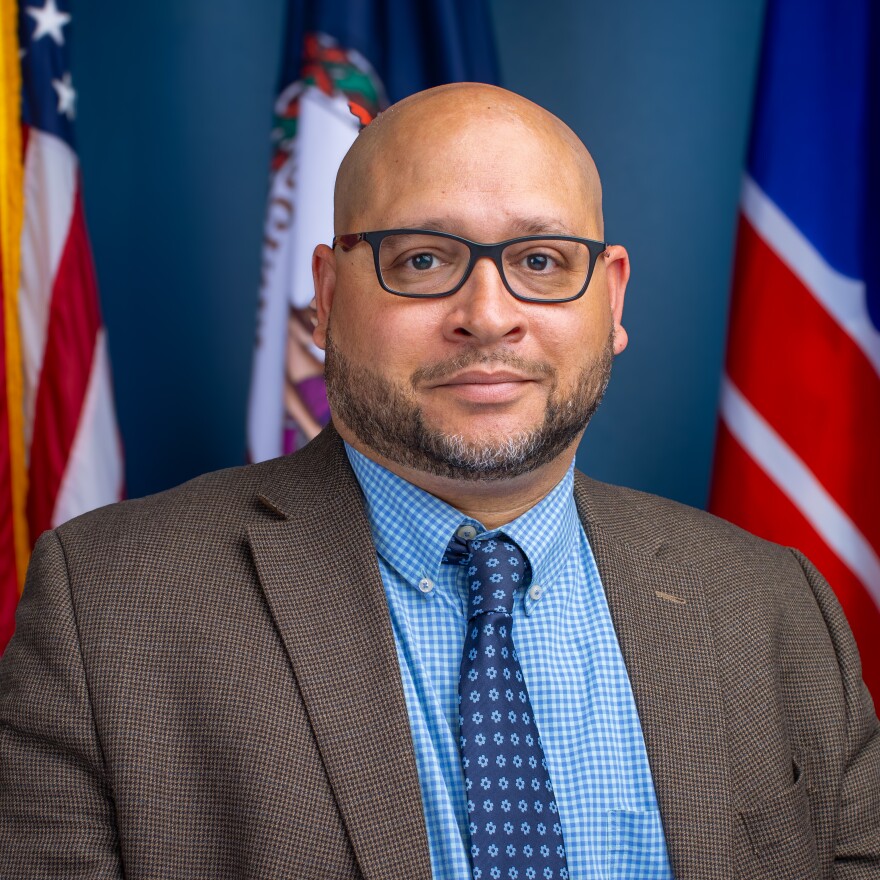The tax and spending legislation that President Donald Trump signed into law on July 4th cuts federal health spending by around $1 trillion over the next decade, as NPR previously reported. WMRA's Randi B. Hagi brings us the second of a two-part report about how local hospitals are bracing for the funding challenges ahead.
The policy changes in the so-called "One Big Beautiful Bill Act" won't just disenroll people from Medicaid, the federal program that provides healthcare funding for lower income people. The legislation also affects how hospitals get paid – or don't – for taking care of the more than one million Virginians who will still be on Medicaid.

Julian Walker, with the Virginia Hospital and Healthcare Association, explained that the federal government pays half of the cost of care for the traditional Medicaid population in Virginia, including children and low-income young mothers, senior citizens, and people with disabilities. The state pays the other half. But for the 'expanded Medicaid' population – low-income, working-age adults who aren't disabled and don't have young children – the federal government pays 90% of the cost of care. Virginia pays their 10% share through what's called a "provider assessment," a tax on the state's 63 acute care hospitals.
JULIAN WALKER: It is a tax on hospital net patient revenue, and effectively … hospitals in Virginia that participate in this provider tax are paying for Medicaid expansion in Virginia.
In the budget bill –
WALKER: The Senate took the provider tax, the provider assessment … and they lowered – it's called a "hold harmless threshold" or a "safe harbor provision," but for the purposes of this conversation, we'll just call it a tax rate. They took the tax rate from 6% to 3.5%.
That rate starts stepping down in fiscal year 2028. On the surface, it sounds like a good thing for hospitals to pay lower taxes. But through paying those taxes, they gain access to a much larger sum of money – including that 90% of the funding for the expanded Medicaid population's care. Part of the provider tax unlocks funding through another mechanism, too, called "state-directed payments." That's where states direct the insurance companies providing Medicaid to reimburse healthcare providers at a higher rate.
WALKER: To basically bridge the gap between what Medicaid traditionally reimburses at and the actual cost of care.
Because without that, Medicaid reimburses at:
WALKER: Seventy-eight cents on the dollar. Medicare reimburses at about 87 cents on the dollar. Both of them reimburse below the cost of care.
Distinct from Medicaid, Medicare is the federal health insurance program for people age 65 or older. In addition to lowering the provider tax that unlocks all that federal Medicaid funding,
WALKER: Under the state-directed payment program, while they let them endure, they put what you might call a ceiling on the value that could be derived from that program. … We have projected that at full implementation, the combined effects of those mechanisms are going to cost Virginia hospitals in excess of $2 billion, with a "b," in revenue on an annual basis.

There are cascading effects to these changes, too. Mary Mannix, the CEO of Augusta Health, said that if enough of their patients lose Medicaid coverage, that would disqualify the health system from a drug discount program called "340B."
MARY MANNIX: We get a discount on our drugs that we can then pass on to our patients. Our annual discount is $6 million a year. So that's a $6 million reduction in operating expenses.
One of the concerns on Travis Clark's mind is recruiting healthcare providers to come work at the hospitals in Woodstock and Luray. He's the vice president of operations for Valley Health's Shenandoah and Page Memorial Hospitals.
TRAVIS CLARK: When you say rural hospitals, you're saying rural America. Just for the impact that our hospitals have in our communities. … We're designated as health professional shortage areas, which just means we don't have enough primary care physicians for our population. And that's nothing new. … It's not unique to us, but it's a reality, and I worry that moving forward, as providers are coming out of medical school, and they're looking to, where would I like to practice medicine? … Do you go to a rural place at this point, because you worry about what support may or may not be there, or what infrastructure may or may not be there?

As Valley Health faces a projected $50 million a year loss in uncompensated care resulting from federal funding cuts, Clark said they may have to change the way they operate – relying more on telemedicine and other technologies, such as a remote monitoring program for congestive heart failure patients. That will be piloted at Page Memorial Hospital in the near future.
CLARK: I think technology like that is going to have to be key as we look at, how do we redesign our care delivery models?
Mannix said her team has started calculating a long range financial forecast in light of all these changes, which they will review with Augusta Health's board before releasing to the public. Then they'll draft an "alignment plan" to meet that financial forecast.
MANNIX: And you can imagine this is going to create anxiety – anxiety in the community, with team members, providers, because everything is on the table. When you get such a significant decrease in reimbursement, it's a game change. … We'll be looking at our hiring practices. We'll be looking at all of the different sites. We'll be looking at the services that we provide to the community. We'll be looking at getting more aggressive on our fundraising goals and objectives.
She said they do have some protective factors in the face of these challenges – no debt, and a board that lives in the community they serve, so they have "skin in the game."
Full disclosure, Augusta Health underwrites programming on WMRA.



